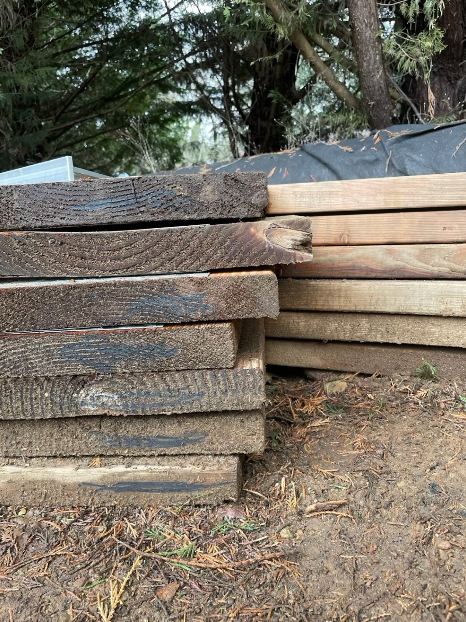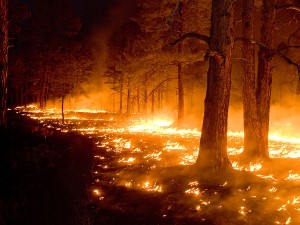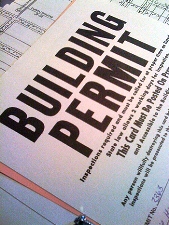DEAR POLE BARN GURU: Good morning.
I am considering building a pole barn on our land in northwest Georgia and wanted to know the following:
1) On your website, you list links for residential, agricultural, and commercial buildings. What is the difference between a those three types of buildings? Are they different because of design or do they each involve different construction materials? Do the commercial buildings use a lower gauge (thicker) sheet of metal for siding than a residential building?
2) Do you have any product comparison documentation between your kits and the other pole barn kits on the market (DIY, Menards, etc.)? Interested specifically in design, material, and construction comparisons.
3) Would your pole barn kits be able to accommodate a chimney/stove pipe if I wanted to use a wood burning stove for heat?
Thanks! CHRIS in RISING FAWN
 DEAR CHRIS: The differences for residential, agricultural and commercial buildings shown on our website are for the convenience of those who are looking for a particular end use, it keeps from having to browse through a plethora of photos of buildings which may not be what one is looking for. The construction materials and methods used are going to be individually tailored to the ultimate end needs of each client, as well as the climactic conditions of a particular site.
DEAR CHRIS: The differences for residential, agricultural and commercial buildings shown on our website are for the convenience of those who are looking for a particular end use, it keeps from having to browse through a plethora of photos of buildings which may not be what one is looking for. The construction materials and methods used are going to be individually tailored to the ultimate end needs of each client, as well as the climactic conditions of a particular site.
Our goal is to custom design for you a building which best meets your wants, needs and budget. We are so confident in our ability to provide the best possible value for your post frame building investment, once this is done, we would happily shop this building for you with any other provider or providers you so desire. How easy is this?
(BTW – Menards might be a bit geographically challenging as their nearest location to you is in Owensboro, KY)
Actually any post frame building (not just a Hansen Pole Building) can accommodate a chimney/stove pipe with the use of a Dektite® (read more here: https://www.hansenpolebuildings.com/2012/09/dektite/).
DEAR POLE BARN GURU: I have a 30 year old pole barn that is 30’ x 40’ x 9’ tall. It has a metal roof, trusses are 4’ on center. Can I tear off the metal on the roof and put down OSB and shingles? JIM in LAWTON
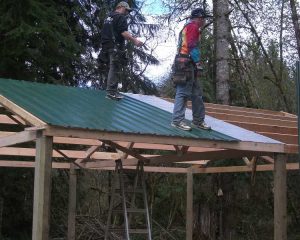 DEAR JIM: Chances are excellent your existing roof system is not designed to support the weight of OSB and shingles, as most pole barn (post frame) trusses are designed for a dead load of only 3 to 5 psf (pounds per square foot) which includes the weight of the trusses themselves plus the roof purlins. Steel roofing weighs in at under one pound per square foot. 7/16″ OSB comes in at roughly 1.5 psf, 15# felt and shingles 2.5 psf making the weight combination more than four times greater than the steel.
DEAR JIM: Chances are excellent your existing roof system is not designed to support the weight of OSB and shingles, as most pole barn (post frame) trusses are designed for a dead load of only 3 to 5 psf (pounds per square foot) which includes the weight of the trusses themselves plus the roof purlins. Steel roofing weighs in at under one pound per square foot. 7/16″ OSB comes in at roughly 1.5 psf, 15# felt and shingles 2.5 psf making the weight combination more than four times greater than the steel.
The big question is – why? Even “lifetime” shingles will usually last only about 15 years and you know the steel roofing you have had made it twice as long. Steel is far more impervious to weather (especially hail) and readily sheds snow, unlike shingles. For my money, if I had to re-roof I would invest in steel roofing with a high quality paint system like Kynar. Read more about Kynar here: https://www.hansenpolebuildings.com/2014/05/kynar/.
DEAR POLE BARN GURU: I have a pole building with all metal sheeting. The interior walls are framed and insulated R13 batt. The ceiling is insulated with 1/2 foam a 3/4″ air gap then R19 on top. The underside of the roof is not insulated. I have eave ridge vent. Building is heated in winter. Can I exhaust fumes (paint,lawnmower,etc.) into the attic space and let it vent out the ridge or will I be causing a condensation problem? I will use a standard box fan to blow exhaust into the attic space. I’m also hoping to do this to help melt snow off the roof.
Thanks. RICH in LEHIGHTON
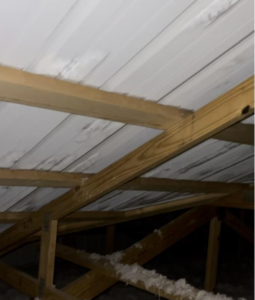 DEAR RICH: I’ve seriously struggled with your question for several weeks now. It lead me to spend hours researching the International Mechanical Code (I am proficient in the IRC and IBC, but not the IMC), looking for backup as to your scenario. In the end it all comes down to this – WHY would you want to dump toxic fumes and their waste into your attic? At some point this has got to be just plain unhealthy.
DEAR RICH: I’ve seriously struggled with your question for several weeks now. It lead me to spend hours researching the International Mechanical Code (I am proficient in the IRC and IBC, but not the IMC), looking for backup as to your scenario. In the end it all comes down to this – WHY would you want to dump toxic fumes and their waste into your attic? At some point this has got to be just plain unhealthy.
Whether you do or do not blow exhausts into your attic, your building has the strong potential for a condensation problem because there is no thermal break below the roof steel. You should look at having closed cell spray foam installed on the underside of the roof steel.
As to the heat from the exhaust helping to melt snow off the roof – do not count on it, by the time it gets into your attic, the heat generated will be minimal at best.
